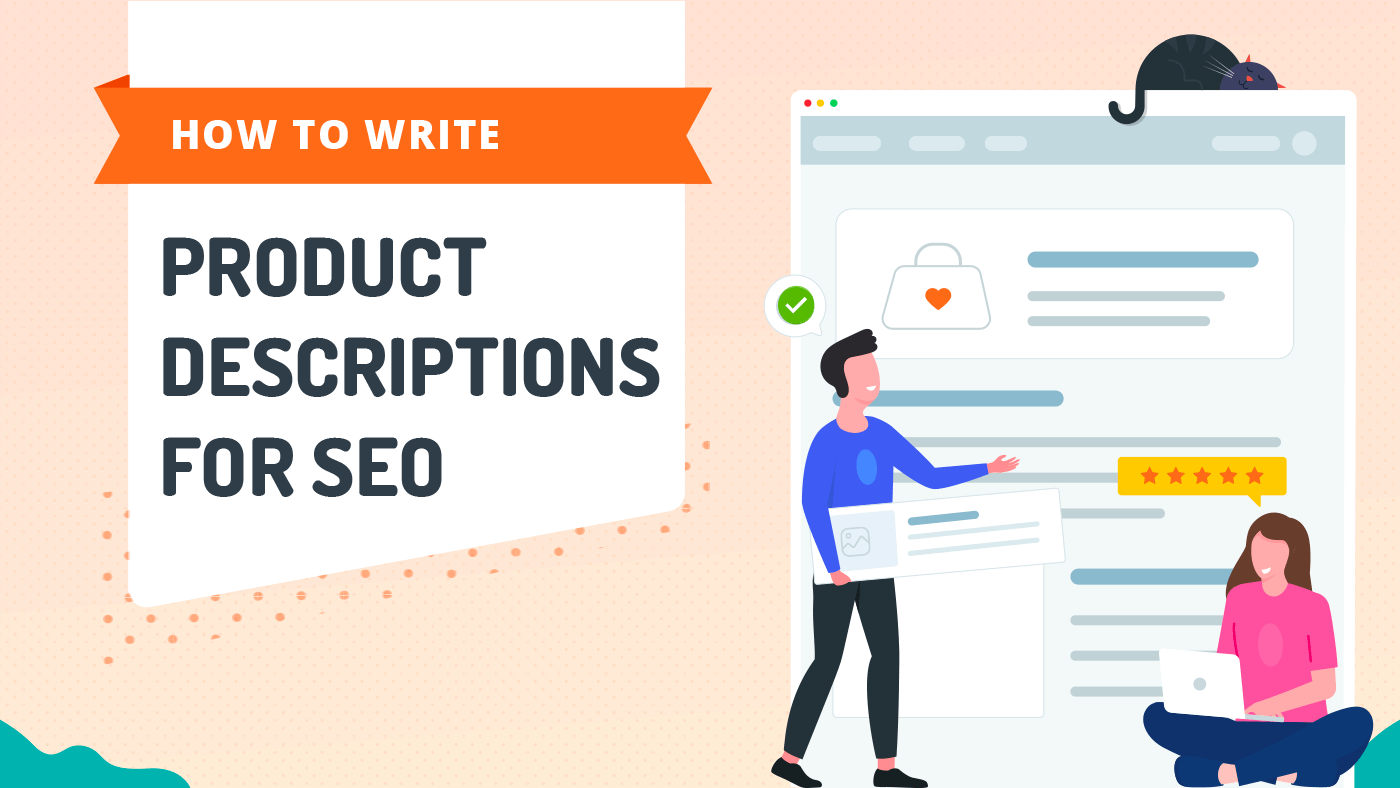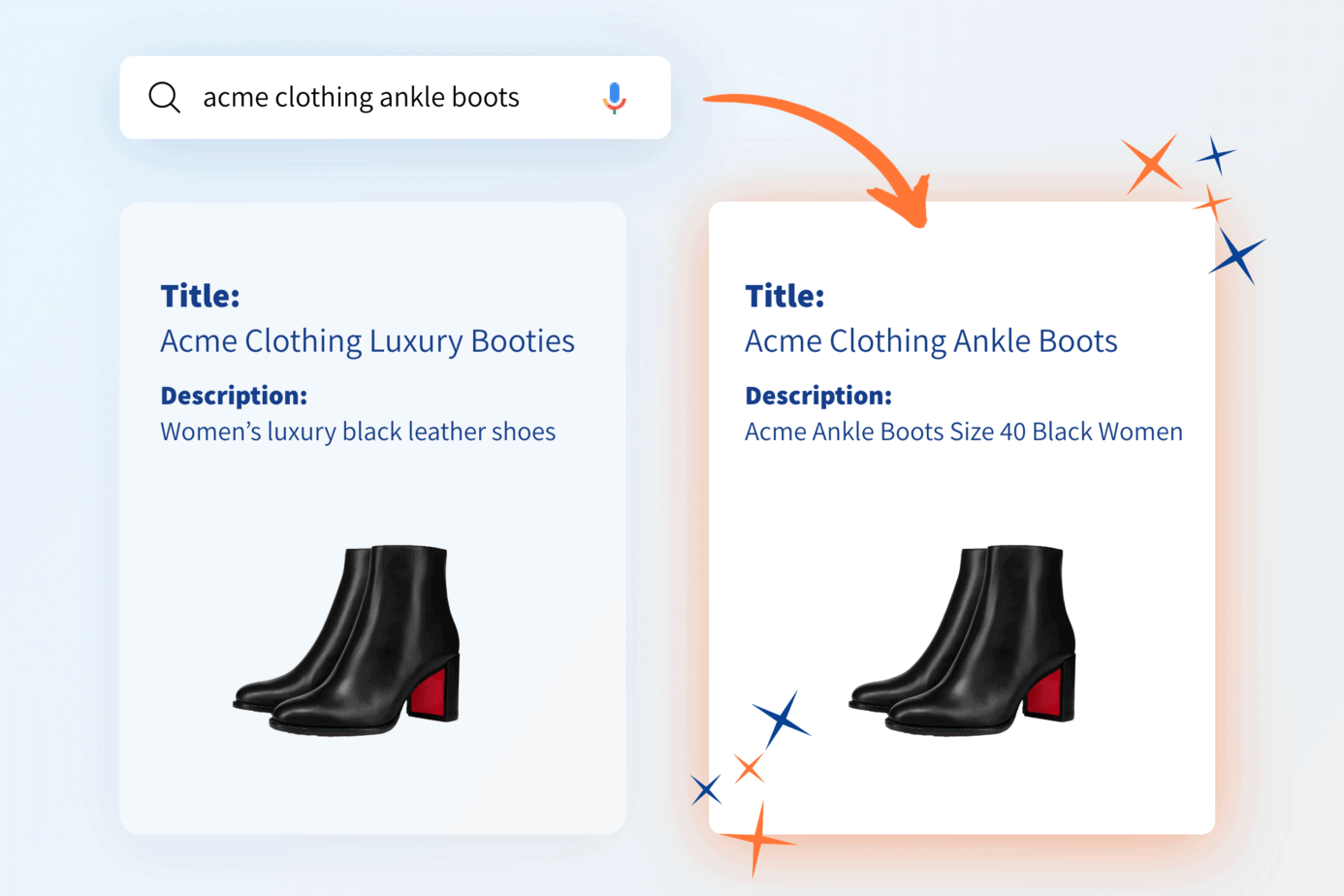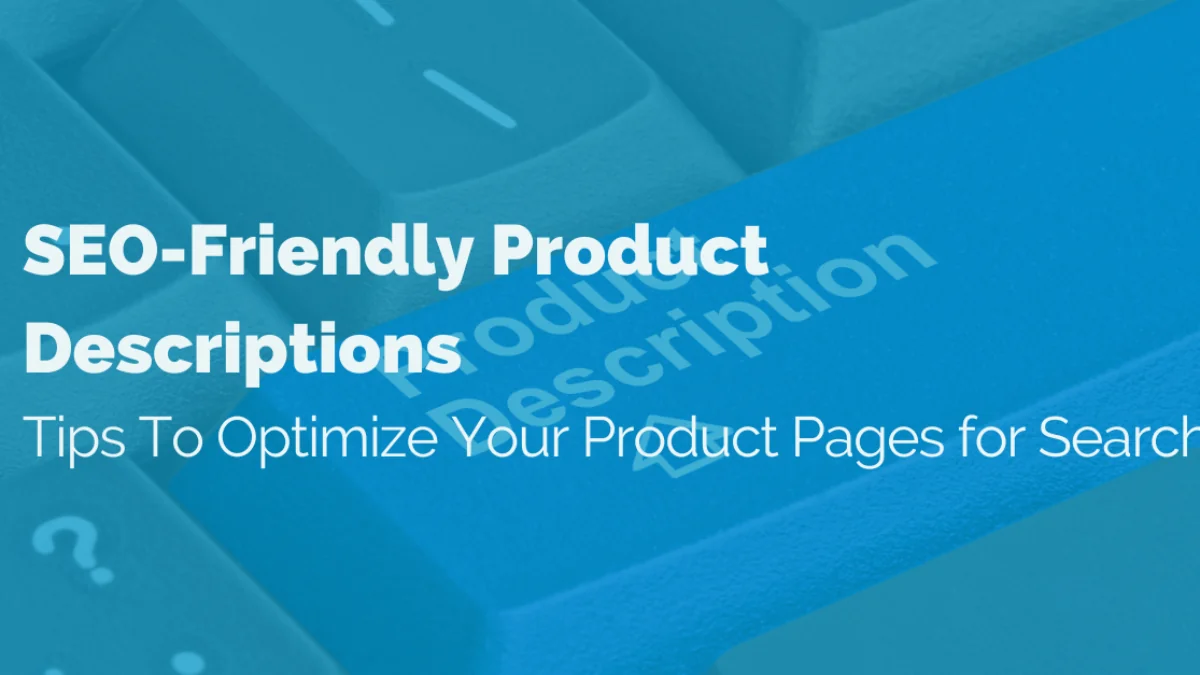
Maximizing sales online calls for compelling SEO product descriptions that speak directly to consumers. These descriptions must be engaging, highlight exclusive aspects of the item, address possible buyer concerns, and inspire an urgency to purchase. They play a significant role, much like a toy’s vibrant colors and sleek design can allure a kid at a store who then won’t rest until it’s theirs.
More than just written appeal, keen keyword research is an integral part of crafting the ideal SEO product description. Identifying search terms customers might use when looking for your product, and carefully embedding them in your description – much like tucking secret notes inside a book for someone to stumble upon – is essential for search engine optimization.
Product description length also matters as it needs to be optimized to maintain consumer interest and readability.
However, watchful balance needs to be maintained; overdoing keywords could lead to messy narration that is detrimental to user experience and search rankings. It can feel as off-putting as spoiling the storyline of a thrilling novel by stuffing unnecessary plot twists.
Now, with an understanding of the importance of product description length and its impact on consumers, let’s start crafting those captivating SEO product descriptions following the best practices.
To optimize product descriptions for SEO, focus on incorporating relevant keywords strategically, emphasizing the unique features and benefits of the product, and structuring the content to be skimmable with headings, bullet lists, and concise yet informative language.
Additionally, including high-quality images and avoiding duplicate content are crucial for SEO optimization. By following these guidelines, you can craft an SEO product description that is both engaging and impactful for consumers.
Crafting Compelling Product Descriptions
Crafting a compelling product description is akin to telling a story that captivates your audience and stirs their desire to embrace the product into their lives. The key to success lies in understanding not only the features but also the benefits it offers.
By focusing on what sets the product apart and addressing potential customer challenges and desires, you can create a description that genuinely resonates with your target audience, thereby effectively influencing consumers’ decisions.
When it comes to highlighting unique features, consider what makes your product stand out. Does it boast advanced technology, remarkable durability, or extraordinary versatility?
By emphasizing these features in your SEO product description, you help consumers understand why they need your product and how it can enhance their lives.
However, merely listing features is not enough; you need to make them come alive for the consumer. Do they save time, simplify tasks, or improve daily routines?
By implicitly answering these questions through your descriptions, you can connect with customers on a deeper level, making your SEO product description more engaging for consumers.
For instance, if you’re selling a versatile kitchen appliance, instead of just saying “versatile,” paint a vivid picture: “From whipping up delicious smoothies to effortlessly chopping vegetables for your favorite recipes, this appliance does it all, saving you time and effort in the kitchen.”
In conclusion, crafting compelling product descriptions which are akin to setting the stage for a grand performance, necessitates adherence to best practices. The details and nuances of search engine optimization, coupled with the right product description length and consumer-focused content, captivate your target audience, enticing them to become part of your story.
Quick Tip: When crafting your product descriptions, put yourself in the shoes of your customer. What problems do they face which your product can solve? How does your product make their life better or easier?
Consider incorporating these essential product features into your description – these options will help answer these questions and present a more appealing proposition to your potential customers.
Answering these questions, keeping in mind their search intent, will help you tailor your description to address their needs directly – an approach that resonates well with your target audience.
In essence, by focusing on the unique features and the product features that your offerings provide and using storytelling techniques to convey its value, you can create compelling product descriptions that engage potential customers and drive sales.
Integrating the best practices of SEO and clear understanding of your target audience, and their search intent, you can transform the product features and options outlined in your descriptions into a powerful marketing tool. Venturing further into the realm of strategic keyword placement, research, and the importance of product images.
Imagine running a bookstore, with a brand-new book that you know everyone will love. How do people discover this book? They might inquire about it by name: “Do you have The Great Adventure by Jane Doe?”
In the landscape of online shopping, the equivalent of asking for the book by name is the search query – the keywords or phrases customers type into a search engine when they are making a specific purchase decision, reflecting their search intent.
Similarly, when someone is looking for a product, they explore various options and enter certain words into a search engine corresponding to their needs.
As a seller, you need to decipher those words and use them in your product description, complete with product features in the form of images and helpful specs. Here enters the critical task of keyword research.

Keyword Research and Placement
Keyword research simply means discovering which words or phrases your potential customers input into search engines when they’re looking for products resembling yours.
It’s all about comprehending what your customers desire and leveraging their language to guide them to your products, considering their search intent and the options they’re considering.
When undertaking keyword research, some terms will be evident, while others might be less apparent. For instance, if you’re vending handcrafted leather wallets, prudence might suggest that “leather wallet” is an imperative keyword to incorporate in your description. However, through meticulous research, you might uncover that phrases like “genuine leather wallet” or “handmade leather wallet” are also popular searches that you should integrate into your product listing, understanding the product features that your customers have in mind.
Understanding Keyword Research
Once you’ve identified the most pertinent keywords for your products, it’s crucial to strategically place them within your product description, bullet points, and anywhere else relevant. Here’s how you should consider utilizing these keywords, keeping in view the product features and options your potential customers have in mind:
Strategic Placement of Keywords
- Headings: Utilize headings within your description to distribute content and offer clarity. Integrating keywords within these headings can amplify the visibility of your product further, emphasising the product features and options you offer.
- Body Text: Organically incorporate keywords throughout your product description, ensuring the text remains engaging, informative, and the product features and options are clear.
- Strategic Positioning: Imagine keywords as signposts guiding potential customers towards your product. Strategic positioning in prime locations such as the title and headings eases the users’ journey to your products on search engine result pages. However, excessive use, like too many signposts on a road trip, can create an overwhelming and confusing experience for users, struggling to navigate the myriad of product features and options. This phenomenon, quite common in the realm of an ecommerce store, is known as keyword stuffing and it not only degrades the user experience but also negatively impacts search rankings.
- Remember: deploying keywords in your product copy enhances visibility, but maintaining a natural flow of language and providing valuable information – including enticing product images – is equally crucial for heightening user experience. This element is a key feature in driving organic traffic to your products.
Efficient keyword research coupled with tactical placement ensures that potential customers locate your products effortlessly on your ecommerce store, catering to both their needs and yours as an online merchant.
When selling products online, the adage “a picture is worth a thousand words” couldn’t be more apt. In the setting of an ecommerce store, high-quality product images are not an optional feature; they’re indispensable for elevating your product’s visibility in the search results, aiding potential customers in their purchase decision.
When potential customers can’t physically touch or see a product up close, especially on an ecommerce site, the images you provide in your product copy give them an idea of what to expect.
They essentially become the front window display of your digital store, enticing and drawing in customers, much like buyer personas in effective copywriting.
Using multiple images from different angles provides a comprehensive view of the product, allowing customers to make informed decisions about their purchase. High-resolution images also communicate professionalism and credibility, increasing trust and confidence in your product and brand.
Role of Imagery in Product SEO
Apart from the visual appeal, there’s another critical benefit to using high-quality images on your ecommerce site: they can significantly enhance your product’s visibility in image search results. By optimizing image file names and alt text with relevant keywords, derived from careful analysis of search volume data, you can improve your product’s chances of being discovered through visual search.
For example: If you’re offering SEO services through your ecommerce store and showcasing an image related to this, embedding alt text like “best-SEO-services” in the image properties can help search engines associate the image with relevant searches.
Optimizing Image File Names and Alt Text
This strategy is like labeling important boxes when moving houses; by giving search engines extra information about your image, you’re helping them categorize and present it to potential customers who are looking for something specific.
Remember, while descriptive file names and alt text can boost visibility, avoid keyword stuffing and ensure that all text in your product copy accurately represents the content of the image through effective copywriting.
Visual content has become increasingly influential in capturing consumer attention and driving purchasing decisions on an ecommerce store.
Therefore, leveraging high-quality imagery isn’t just about fulfilling a requirement; it’s about creating an immersive, informative experience for your customers at every stage of their buyer journey, using a well-researched buyer persona.
Integrating captivating visuals into your product descriptions doesn’t just enhance aesthetics; it also plays a pivotal role in securing customer engagement and improving your product’s search engine visibility, especially in the competitive landscape of an ecommerce store.
When optimizing your product descriptions for search engines, don’t overlook the potential power of accessory descriptions.
By providing detailed and comprehensive descriptions of accessories or complementary items within the main product listing, you’re essentially creating an expanded web of keywords associated with the product. This feature is essential in standing out in an ecommerce store environment.
This widens your reach in search results based on search volume and boosts the chances of appearing in various relevant searches.
Let’s dive deeper into this strategy using the power of effective copywriting. When a potential customer searches for a particular product, well-crafted accessory descriptions give your product more opportunities to show up in different search queries related to those accessories.
For example, if someone is looking for a camera strap and your main product listing features a camera, including a detailed description of the compatible camera straps could potentially attract more traffic to your ecommerce site.

Boosting SEO via Accessory Descriptions
Moreover, well-written accessory descriptions not only enrich the user experience by providing valuable information but also act as supportive features for cross-selling and upselling related items.
By applying significant understanding of your buyer personas, customers see that additional accessories are available and understand their benefits, they are more likely to make additional purchases, significantly increasing the average order value and overall sales revenue on your ecommerce site.
Consider this scenario: You’re selling a high-quality blender on your ecommerce site, and through adept copywriting and by understanding your buyer personas, within the product description, you mention the availability of compatible add-on components such as extra blades, specialized cups, and recipe books.
When entering the world of ecommerce, it’s important to highlight your products effectively with thorough descriptions. Specifically, focusing on the accessories alongside your main product can give potential customers more reasons to explore different products under one product title and indulge in a comprehensive purchase.
It’s crucial to maintain relevance when creating accessory descriptions in the ecommerce landscape and avoid overwhelming the customer with excessive details.
The focus should be on showcasing the benefits and unique features of each accessory in the context of the main product, ensuring that every element presented seamlessly complements the product title.
In essence, incorporating well-crafted accessory descriptions within your product listings in your ecommerce platform is an effective way to improve SEO while simultaneously benefiting from increased cross-selling and upselling opportunities.
By expanding the range of keywords associated with your product title and enriching the overall visitor’s experience, you are positioning your products for greater visibility and engagement in the online marketplace.
Now, let’s transition into effectively measuring the impact of these ecommerce strategies through an analysis of SEO metrics in our next section.
When optimizing product descriptions for online sales, backing up strategies with solid data is crucial.
Metrics like click-through rates (CTR), conversion rates, bounce rates, and keyword rankings provide valuable insights into the performance of the product title and overall descriptions, offering a deeper understanding of user engagement and search visibility in your ecommerce business.
Effectiveness Analysis: SEO Metrics
Let’s start with click-through rates (CTR). This ecommerce metric measures the percentage of how many people who see your product description actually click through to view the full details of a product title.
A higher CTR generally indicates that your product description is compelling, and it successfully entices users, while a lower CTR might indicate that the description isn’t effectively capturing the interest of potential customers.
Conversion rates play an equally important role in ecommerce as they measure the percentage of visitors who take a desired action, such as making a purchase, after engaging with your product description.
A high conversion rate indicates that your product title and description are effective at convincing potential customers to make a purchase, while a low conversion rate may suggest barriers that prevent customers from completing a purchase.
Furthermore, bounce rates provide critical insights into how effectively your ecommerce product descriptions engage visitors.
A high bounce rate means that visitors are leaving the page without engaging further with your site, indicating that they may not find the information around the product title or description relevant or appealing. Meanwhile, a low bounce rate suggests that visitors are finding value in your product descriptions and are exploring further.
Finally, keyword rankings play a significant role in determining the visibility of your product title and descriptions in search engine results on your ecommerce site. By analyzing the performance of specific keywords, businesses can gain important insights into which terms are driving organic traffic to their products.
Keyword rankings play a significant role in determining the visibility of your product descriptions in search engine results. By analyzing the performance of specific keywords, businesses can gain important insights into which terms are driving organic traffic to their products.
In closely examining these SEO metrics, businesses can gain valuable insights into how their product descriptions are performing and make informed decisions about optimizing them for better online sales.
These metrics not only provide indicators of success but also opportunities for improvement and refinement in an ever-evolving online marketplace.
Now equipped with a deeper understanding of how to gauge the efficacy of product descriptions through SEO metrics, let’s dive into advanced techniques for maximizing the visibility and impact of your product pages.

Advanced SEO Techniques for Product Pages
When it comes to optimizing your product pages for search engines, several advanced tactics can significantly impact your online sales. One of the most powerful techniques is implementing schema markup.
This structured data markup helps search engines understand the specific details of your products, such as price, availability, and product reviews.
By providing this information in a format that search engines can easily interpret, you increase the likelihood of your products appearing in rich snippets, which can lead to higher click-through rates and improved visibility.
Another effective strategy is creating internal links to related products within your website. When you link related products together, you not only guide users to additional items they might be interested in but also signal to search engines that these products are closely connected.
This can strengthen the overall authority of your product pages and improve their rankings in search results. Additionally, internal linking enhances user navigation and encourages visitors to explore more of your offerings, potentially increasing the average order value.
Moreover, leveraging user-generated content such as product reviews can have a substantial impact on SEO. Positive reviews add credibility and trustworthiness to your product pages, which may lead to higher click-through rates and conversion rates.
Encouraging customers to leave reviews not only provides valuable social proof but also generates fresh, relevant content that signals to search engines the popularity and quality of your products. This user-generated content contributes to an enhanced user experience and can influence your site’s authority in search engine algorithms.
For instance, imagine you’re selling a variety of sportswear on your e-commerce website. By implementing schema markup with detailed information about each product’s material, size availability, and customer ratings, you provide clearer signals to search engines about the relevance and value of your products.
Similarly, by strategically interlinking running shoes with related socks or athletic apparel, you guide customers towards complementary items while fortifying the topical relevance of each page.
By incorporating these advanced SEO techniques into your product pages, not only do you improve their visibility in search results but also enhance the overall user experience – a combination that has the potential to drive more sales for your business.
Implementing advanced SEO strategies for your product pages can significantly impact your online sales by improving visibility and enhancing the overall user experience. It’s a winning combination for driving more conversions and growing your business.
